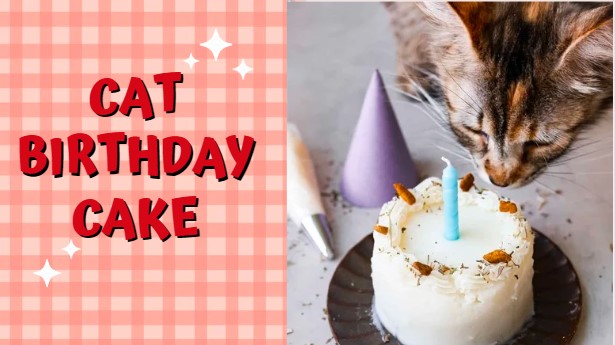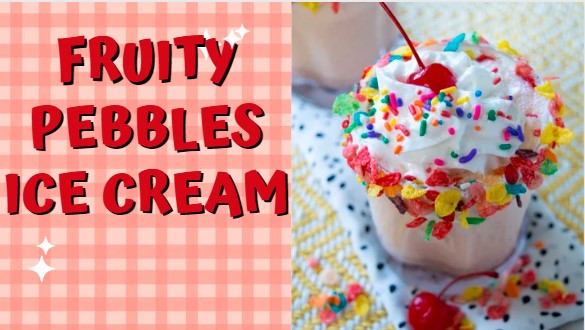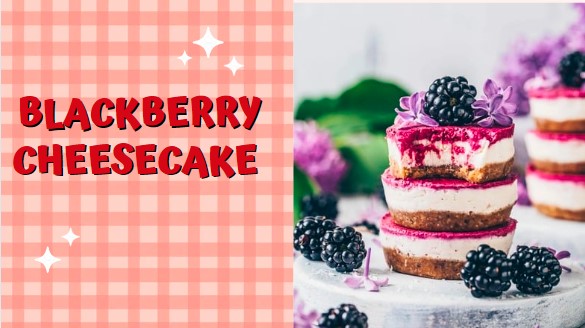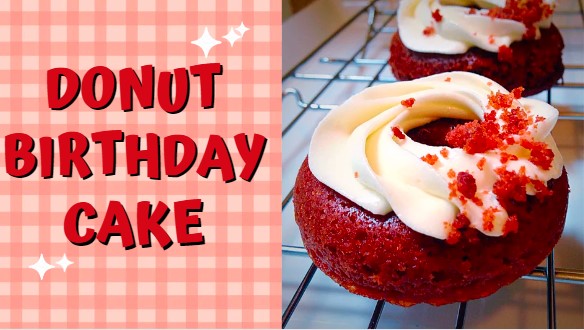Celebrating a cat’s birthday with a specially designed Cat Birthday Cake is a delightful way to show your feline friend some extra love. When preparing a birthday treat for your cat, it’s essential to prioritize their health and dietary needs. A cat-friendly cake might be crafted from a base of mashed tuna or salmon, mixed with a bit of egg and cooked until firm. This protein-rich treat can be molded into fun shapes, like a fish or a paw, and then cooled to set.
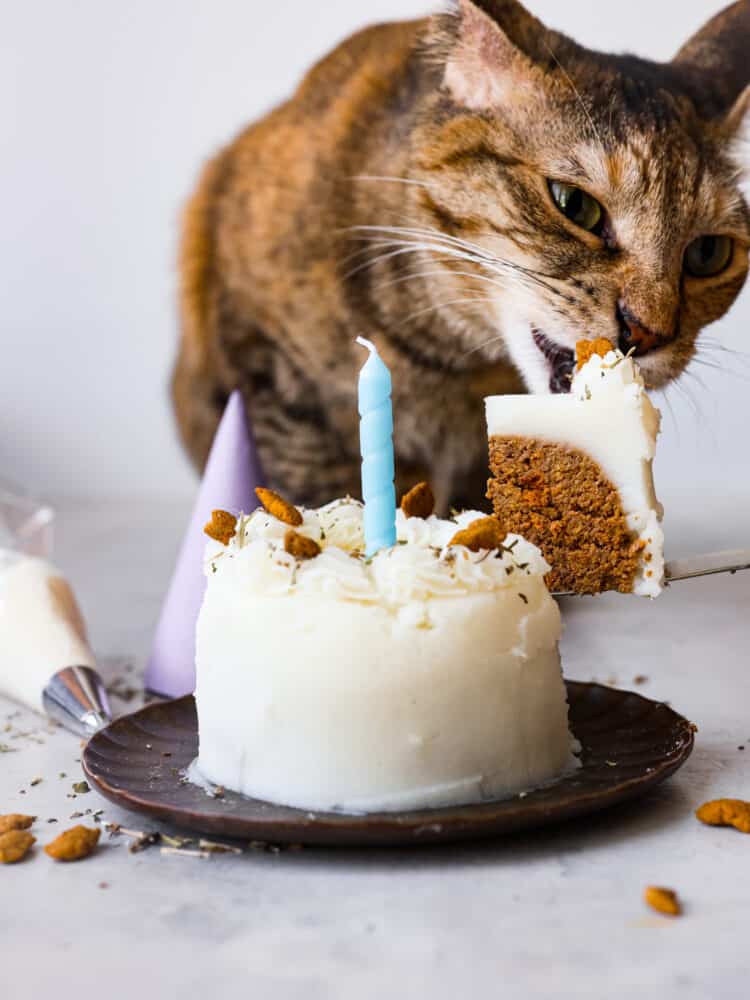
For the “frosting,” pureed pumpkin or a small dollop of unsweetened yogurt can be used to decorate the cake, making it both appealing and safe for your cat to enjoy. Adding a sprinkle of catnip or a few treats on top can make the cake even more enticing. This gesture not only adds a touch of festivity to your cat’s day but also provides a healthy snack tailored just for them. Always ensure any ingredients used are safe for cats and avoid onions, garlic, and chocolate, which are toxic to them. Celebrating your cat’s birthday with a homemade Cat Birthday Cake is a special way to express your affection and make their day unforgettable.
Kitchen Tools Needed
Ingredients for Cat Birthday Cake
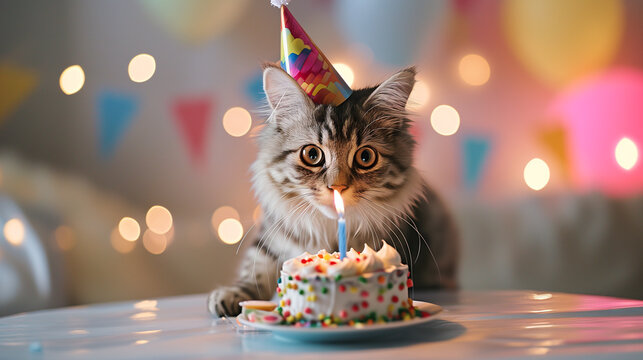
How To Make Cat Birthday Cake?
Preparing the Cake Mixture
Begin by preheating your oven to 350°F (175°C) if you’re using an oven. Drain the canned tuna or salmon thoroughly to remove excess liquid. In a mixing bowl, mash the tuna or salmon using a fork until it becomes somewhat flaky. Crack the eggs into the bowl and whisk them together with the mashed fish until the mixture is relatively smooth.
Adding Vegetables
Introduce the pureed carrot or pumpkin into the fish and egg mixture. Mix all the ingredients well to ensure even distribution. The carrot or pumpkin not only adds nutritional value but also moisture, making the cake softer for your cat.
Baking the Cake
Grease your cake mold or cupcake tin lightly with a little oil to prevent sticking. Spoon the mixture into the mold, pressing down lightly to eliminate any air pockets. Place the mold in the oven, or if using a microwave, adjust the cooking time accordingly (usually about 2-3 minutes on high, depending on the microwave). In the oven, bake for 15-20 minutes or until the cake is firm and the edges start to pull away from the mold.
Preparing the Frosting
While the cake is baking, prepare the frosting. Take the unsweetened plain yogurt and stir it until smooth. Keep it in the refrigerator until you’re ready to use it.
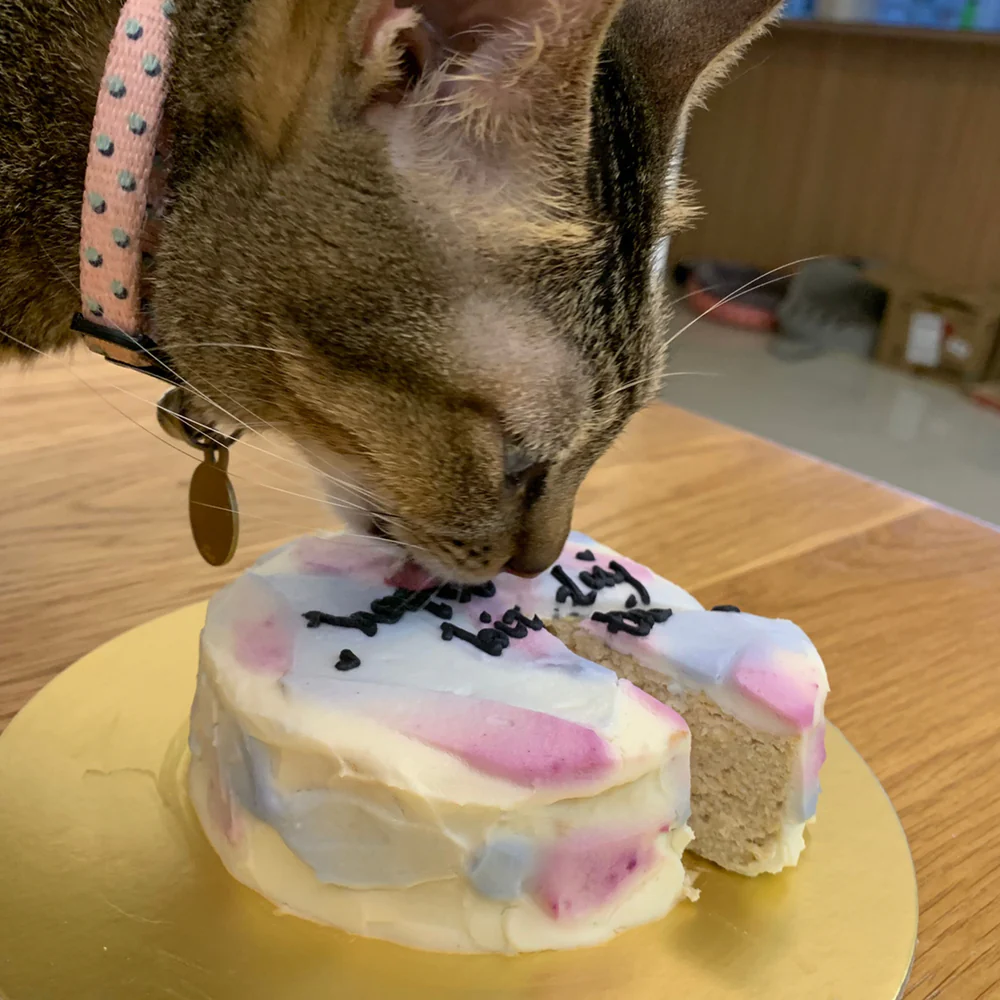
Cooling and Decorating
Once the cake is done, remove it from the oven or microwave and allow it to cool completely. This is important as serving it hot could harm your pet. Once cool, carefully unmold the cake onto a serving plate.
Adding the Finishing Touches
Spread a thin layer of the chilled yogurt over the top of the cake, smoothing it out with a spatula. If you like, sprinkle a little catnip over the frosting for an extra treat, and decorate the top with your cat’s favorite treats or a bit of shredded chicken.
Serving the Cake
Cut the cake into manageable pieces for your cat, ensuring it’s the appropriate size for them to eat comfortably. Watch as your feline friend enjoys this special birthday treat made with love! Remember, treats like this should be given in moderation, as part of a balanced diet.
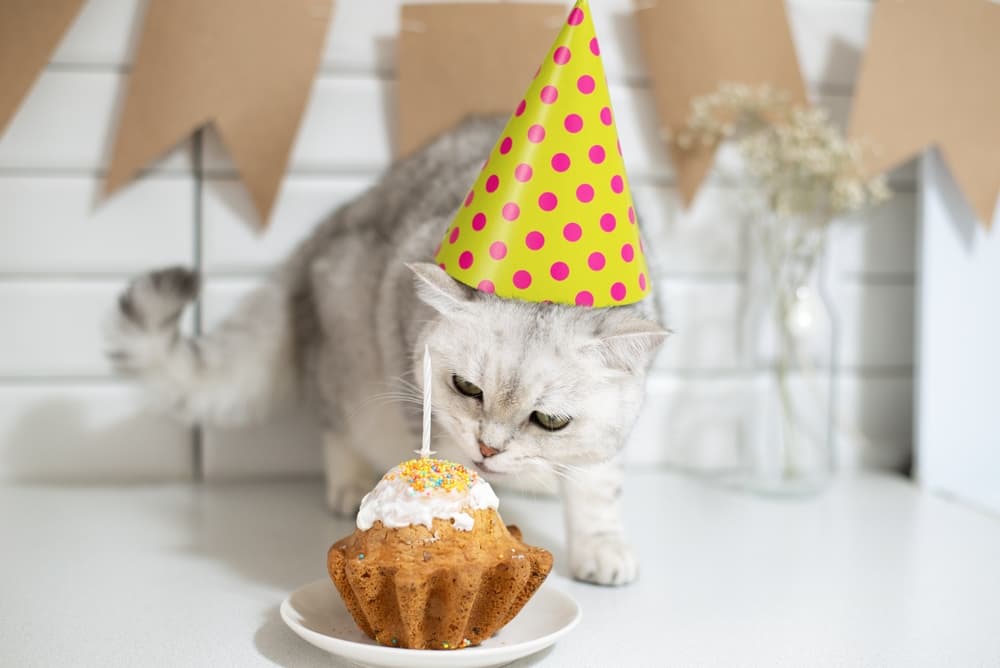
Tips And Tricks For Cat Birthday Cake
Choose Safe Ingredients: Always opt for ingredients that are safe for cats. Avoid using anything toxic like onions, garlic, or chocolate. Consult your vet if you’re unsure about certain ingredients.
Keep It Unsweetened: Cats do not have a sweet tooth, so make sure to use unsweetened and unflavored ingredients, especially in components like yogurt.
Moderation Is Key: Even though it’s a celebration, remember that this cake should be a treat and not replace your cat’s regular diet. Serve small portions suitable for your cat’s size and dietary needs.
Add Variety with Shapes: Use silicone molds in fun shapes like fish or mice to make the cake more visually appealing for your celebration.
Temperature Matters: Ensure the cake is completely cool before serving to avoid burning your cat’s mouth. Room temperature is ideal.
Keep It Simple: Cats are generally more interested in the smell and taste than the appearance of the cake, so there’s no need for elaborate decorations or coloring.
Introduce New Foods Gradually: If this is the first time your cat is trying some of these ingredients, introduce them slowly over a few days before the birthday to ensure they don’t have any adverse reactions.
Experiment with Textures: Some cats prefer a crunchier texture while others might like something smoother. Consider adding a crunchy topping like their favorite dry food or a smoother frosting with pureed pumpkin.
Storage: If there are leftovers, you can store the cake in the refrigerator for a couple of days. Make sure it’s covered to avoid it absorbing odors from other foods.
Capture the Moment: Don’t forget to take photos of your cat enjoying their special treat! This can be a fun way to remember your pet’s birthday.

Variations for Cat Birthday Cake
Substitutions for Cat Birthday Cake

Frequently Asked Questions – FAQ’s
Cat Birthday Cake
Course: DessertsCuisine: Pet FoodDifficulty: Easy4
servings15
minutes20
minutes120
kcalIngredients
200 grams of Canned Tuna or Salmon: Ensure it’s in water, not oil, and no added salt.
2 Eggs: Acts as a binder and adds protein.
4 Tablespoons of Carrot or Pumpkin (pureed): For natural sweetness and fiber.
2 Tablespoons of Unsweetened Plain Yogurt: For the frosting, ensuring it’s xylitol-free.
A Sprinkle of Catnip: To garnish, making it irresistible to your cat.
Optional Treats for Decoration: Such as a few of your cat’s favorite crunchy treats or a little shredded chicken.
Directions
- Begin by preheating your oven to 350°F (175°C) if you’re using an oven. Drain the canned tuna or salmon thoroughly to remove excess liquid. In a mixing bowl, mash the tuna or salmon using a fork until it becomes somewhat flaky. Crack the eggs into the bowl and whisk them together with the mashed fish until the mixture is relatively smooth.
- Introduce the pureed carrot or pumpkin into the fish and egg mixture. Mix all the ingredients well to ensure even distribution. The carrot or pumpkin not only adds nutritional value but also moisture, making the cake softer for your cat.
- Grease your cake mold or cupcake tin lightly with a little oil to prevent sticking. Spoon the mixture into the mold, pressing down lightly to eliminate any air pockets. Place the mold in the oven, or if using a microwave, adjust the cooking time accordingly (usually about 2-3 minutes on high, depending on the microwave). In the oven, bake for 15-20 minutes or until the cake is firm and the edges start to pull away from the mold.
- While the cake is baking, prepare the frosting. Take the unsweetened plain yogurt and stir it until smooth. Keep it in the refrigerator until you’re ready to use it.
- Once the cake is done, remove it from the oven or microwave and allow it to cool completely. This is important as serving it hot could harm your pet. Once cool, carefully unmold the cake onto a serving plate.
- Spread a thin layer of the chilled yogurt over the top of the cake, smoothing it out with a spatula. If you like, sprinkle a little catnip over the frosting for an extra treat, and decorate the top with your cat’s favorite treats or a bit of shredded chicken.
- Cut the cake into manageable pieces for your cat, ensuring it’s the appropriate size for them to eat comfortably. Watch as your feline friend enjoys this special birthday treat made with love! Remember, treats like this should be given in moderation, as part of a balanced diet.
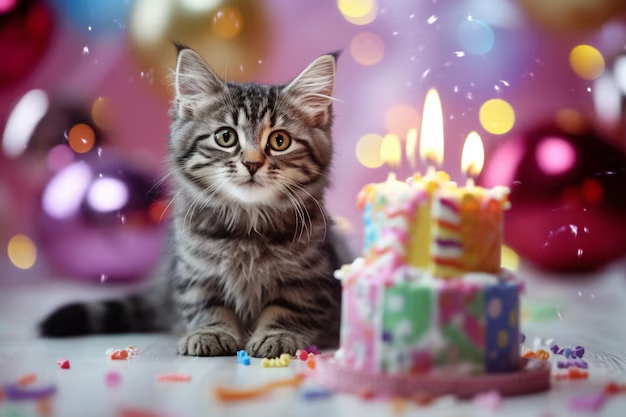
Conclusion
Creating a Cat Birthday Cake for your cat is a wonderful way to celebrate their special day, offering a delightful treat that caters to their taste and dietary needs. By using simple, safe ingredients like fish, eggs, and a bit of vegetables, you can prepare a healthy and enjoyable treat that makes your feline feel cherished.
The process of baking a cake also adds a personal touch to the celebration, ensuring that everything from the ingredients to the presentation is perfect for your pet. As you watch your cat enjoy their special cake, the extra effort puts a memorable stamp on the festivities, making your cat’s birthday truly memorable.

